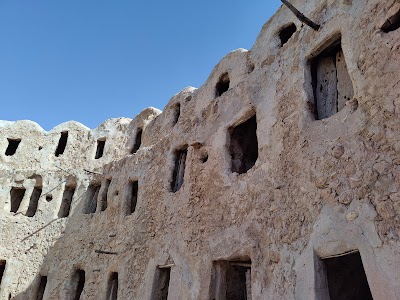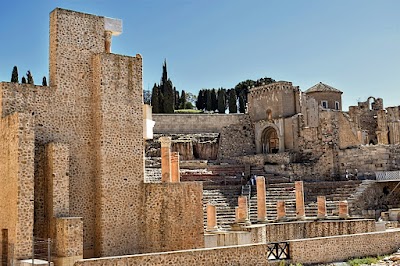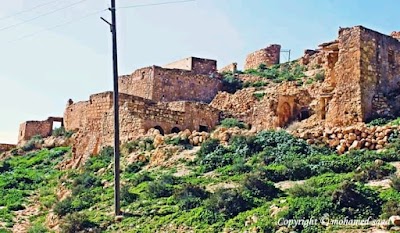Qasr al-Haj (قصر الحاج)
Overview
**Qasr al-Haj: A Jewel of Berber Heritage**
Nestled in the stunning Jabal al-Gharbi District of Libya, **Qasr al-Haj** stands as a magnificent testament to the region’s rich cultural heritage. This ancient granary fort, known as a "qasr," meaning castle or fort in Arabic, is an architectural marvel that draws travelers in with its historical significance and unique circular design. Constructed in the 12th century by Sheikh Mohammed al-Hajj, it primarily served the local Berber communities as a secure storage facility for grain and other essential supplies.
The **distinctive circular structure** of Qasr al-Haj sets it apart from typical square or rectangular granary forts. Housing approximately 114 rooms or silos across two levels, this ingenious design maximized space while ensuring efficient storage and easy access. Each family or tribe had designated rooms for storing grain, olive oil, and cherished possessions. This communal approach not only provided security but also fostered a sense of unity and cooperation among the local communities.
Beyond its practical purposes, **Qasr al-Haj** embodies the historical and social dynamics of the Berber tribes. It reflects their communal lifestyle and advanced understanding of agriculture and architecture. The granary served as a social hub where tribes gathered to exchange goods and share news, promoting social cohesion and harmonious relationships. This role further solidified the qasr's significance as a focal point in the community.
As visitors step inside Qasr al-Haj, they are captivated by the **well-preserved state** of the granary. Walking through its ancient halls, one can almost hear the echoes of bustling activity that once filled these walls. A fascinating feature of the site is the intricate symbols and markings above each storage cell, used by families to identify their allocated spaces. These markings highlight the creativity and organized nature of the Berber people.
Exploring further, the **defensive features** of the granary become apparent. The high, thick walls were designed to protect stored goods from raiding tribes and hostile forces, ensuring that the community could sustain itself during times of conflict. This fortress-like construction adds another layer of historical intrigue to the story of Qasr al-Haj.
Additionally, the qasr boasts an **ingenious ventilation system**, reflecting the builders' advanced understanding of environmental adaptation. Small openings in the walls facilitate air circulation, preventing moisture buildup and preserving the grain for extended periods. This architectural achievement is yet another example of the ingenuity that went into constructing Qasr al-Haj.
**Qasr al-Haj** is not merely a historical site; it symbolizes the perseverance and resilience of the Berber communities. Despite the passage of centuries, the qasr remains a proud reminder of a bygone era and the rich cultural legacy of the region. For those intrigued by history, architecture, and culture, a visit to Qasr al-Haj offers an unparalleled opportunity to witness these intertwined elements firsthand.
Travelers embarking on a journey to Qasr al-Haj will traverse the serene landscapes of the **Jabal al-Gharbi District**, experiencing breathtaking vistas of the Libyan highlands. The site is conveniently accessible from Ghadames, a UNESCO World Heritage site celebrated for its traditional architecture and desert landscape. Combining a visit to Qasr al-Haj with a trip to Ghadames provides a comprehensive experience of Libya’s awe-inspiring historical tapestry.
To enhance your visit, consider hiring a **local guide** well-versed in the qasr's history and the cultural practices of the Berber tribes. These knowledgeable guides can offer invaluable insights and stories that will enrich your understanding of the site. Additionally, planning your visit during the cooler months will make your exploration more comfortable, allowing you to fully appreciate the qasr's intricate details and historical ambiance.
In conclusion, **Qasr al-Haj** is a remarkable monument of ancient ingenuity and communal spirit. It offers a unique glimpse into the lives of the Berber tribes and their sophisticated methods of storage and defense. For history enthusiasts and casual tourists alike, a visit to this granary fort is a step back in time, providing a deeper appreciation of Libya’s rich and varied heritage. So, pack your bags and prepare to be amazed by the timeless beauty and historical depth of Qasr al-Haj!






